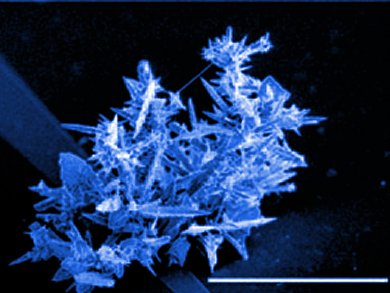Researchers at the University of Toronto and Ontario Cancer Institute, Canada, have made an impressive contribution to how biomolecular markers might be detected in the future. The direct analysis of most types of clinical samples requires femtomolar detection limits to sense scarce analytes with an acceptably low level of false negatives. Very high levels of specificity are required to ensure low levels of false positives.
Shana Kelley and co-workers have revealed record-breaking levels of sensitivity (as few as 10 cancer cells) by using sensors able to capture large, slow-moving analytes with high efficiency. They also developed an improved class of probe molecules that were necessary to detect a specific cancer biomarker (i.e., those particular to chronic myleoid leukemia). Their approach enables sequence-specific detection of long mRNAs even from unpurified probes like cell lysates and whole blood.
The picture shows a sequence of steps used in nucleic acids analysis. The sensors are first functionalized with probe molecules, and then hybridized with a target-containing solution.

- Direct Genetic Analysis of Ten Cancer Cells: Tuning Sensor Structure and Molecular Probe Design for Efficient mRNA Capture
E. Vasilyeva, B. Lam, Z. Fang, M. D. Minden, E. H. Sargent, S. O. Kelley,
Angew. Chem. Int. Ed. 2011.
DOI: 10.1002/anie.201006793 - E. Vasilyeva, B. Lam, Z. Fang, M. D. Minden, E. H. Sargent, S. O. Kelley,
Angew. Chem. 2011.
DOI: 10.1002/ange.201006793



